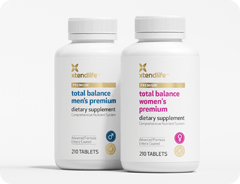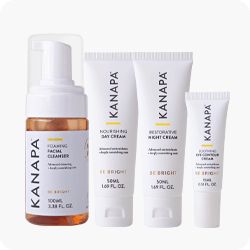The symptoms of asthenopia include sensitivity to glare, headaches, sore eyes, and blurred vision. General eye fatigue symptoms are in most cases mild, but symptoms get progressively worse if the causes and symptoms are not rectified.
From our prior research, we already know that astaxanthin has profound properties to help with anti-aging, but its other positive effects now show that it helps to reduce eye fatigue and asthenopia.
Recently several published clinical studies have shown a positive link between astaxanthin intake and the reduction of eye fatigue.
So far, nine Japanese clinical studies conducted by six independent ophthalmological establishments were able to conclude the efficacy of astaxanthin to alleviate visual asthenopia by observing improvements in the accommodation function and recovery of the ciliary body, retinal blood flow, and inflammation markers.
A study by Nakamura (2004), demonstrated significant improvements in reducing asthenopia and positive accommodation in 4 mg per day and 12 mg per day groups. However, Nitta et al., (2005), established the optimum daily dose at 6 mg for a period of 4 weeks by comparing eye fatigue using a visual analogue scale (VAS) and accommodation values.
Furthermore, results obtained by Shiratori et al., (2005) and Nagaki et al., (2006), also confirmed the previous findings that astaxanthin supplementation at 6 mg for 4 weeks improved symptoms associated with tiredness, soreness, dryness, and blurry vision; and another study by Takahashi & Kajita (2005), also demonstrated that astaxanthin treated groups were able to recover quicker than control groups after heavy visual stimulus.
Japanese ophthalmology researchers also further concluded that in supplemental terms this equated to 4 mg astaxanthin per day potentially delivering the same benefits as 4 mg prednisolone without the side effects of intraocular pressure build-up.
For astaxanthin to work it has to pass through the human blood-retinal barrier (BRB). This is similar to the blood-brain barrier (BBB), so astaxanthin is expected to pass through because its molecular size is able to accommodate this transfer.
Eye fatigue or asthenopia is a common problem, and now a potentially resolvable one with such findings as those above. If current improvements tend to be only 50% successful and other factors are likely to be involved, based on the current clinical evidence, astaxanthin offers a complementary alternative by reducing inflammation, improving accommodation, and increasing blood flow.
References
- Iwasaki & Tawara, (2006). Effects of Astaxanthin on Eyestrain Induced by Accommodative Dysfunction. Journal of Eye (Atarashii Ganka) (6):829-834.
- Suzuki et al., (2006). Suppressive effects of astaxanthin against rat endotoxin-induced uveitis by inhibiting the NF-kB signaling pathway. Exp. Eye Res., 82:275-281.
- Nagaki et al., (2006). The supplementation effect of astaxanthin on accommodation and asthenopia. J. Clin. Therap. Med., 22(1):41-54.
- Miyawaki et al., (2005). Effects of astaxanthin on human blood rheology. J. Clin. Therap. Med., 21(4):421-429.
- Nitta et al. (2005). Effects of astaxanthin on accommodation and asthenopia – Dose finding study in healthy volunteers. J. Clin. Therap. Med., 21(6):637-650.
- Shiratori et al. (2005). Effect of astaxanthin on accommodation and asthenopia – Efficacy identification study in healthy volunteers. J. Clin. Therap. Med., 21(5):543-556.
- Takahashi & Kajita (2005). Effects of astaxanthin on accommodative recovery. J. Clin. Therap. Med., 21(4):431-436.
- Nagaki et al. (2005). The effects of astaxanthin on retinal capillary blood flow in normal volunteers. J. Clin. Therap. Med., 21(5):537-542.
- Nakamura et al. (2004). Changes in Visual Function Following Peroral Astaxanthin. Japan J. Clin. Opthal., 58(6):1051-1054.
- Ohgami et al., (2003). Effects of astaxanthin on lipopolysaccharide-induced inflammation in vitro and in vivo. Invest.
Ophthal. Vis. Sci., 44(6):2694-2701. - Nagaki Y., et al., (2002). Effects of astaxanthin on accommodation, critical flicker fusions, and pattern evoked potential in visual display terminal workers. J. Trad. Med., 19(5):170-173.
- Sawaki, K. et al. (2002) Sports performance benefits from taking natural astaxanthin characterized by visual activity and muscle fatigue improvements in humans. J. Clin. Ther. Med., 18(9):73-88.


 Supplements
Supplements Bundles
Bundles









